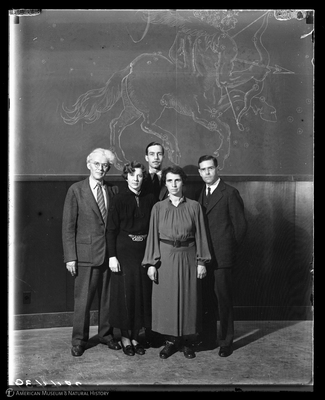Despite being the most prolific writer out of the curatorial staff, Lockwood was not promoted to associate curator until May 1943, 8 years after starting work as an assistant curator. Additionally, following Dororthy A. Bennett's departure in 1939, Lockwood was the sole female presence on the planetarium staff.1

While little evidence remains of Lockwood's year as acting curator of the planetarium, it is apparent that she suffered nearly the same fate as another great female curator at the time, Maude Bennot of the Adler Planetarium. Both Lockwood and Bennot were stripped of their positions when men returned to work after World War II.
On September 1, 1945, Lt. Commander Gordon A. Atwater replaced Lockwood as the new planetarium chairman and chief curator. As the curator, Atwater focused more on protocol and authority rather than past loyalty and competence, thus resulting in his elimination of both associate and assistant curatorial positions. This change reduced Lockwood to nothing more than a lecturer by 1946, thus putting her in a financially restricted position.1
A few months after this change, Lockwood resigned and got a job as managing editor of the Grolier Society, a New York publishing house. Like Bennot, Lockwood never returned to planeteria or astronomical teaching.
The roles these two women attained as acting directors were unique to their time, as postwar women would not be in positions of leadership like such for a couple decades.1 Gender equity was a temporary measure women like Lockwood benefited from, before the ideology of male superiority eclipsed this belief in the postwar period.